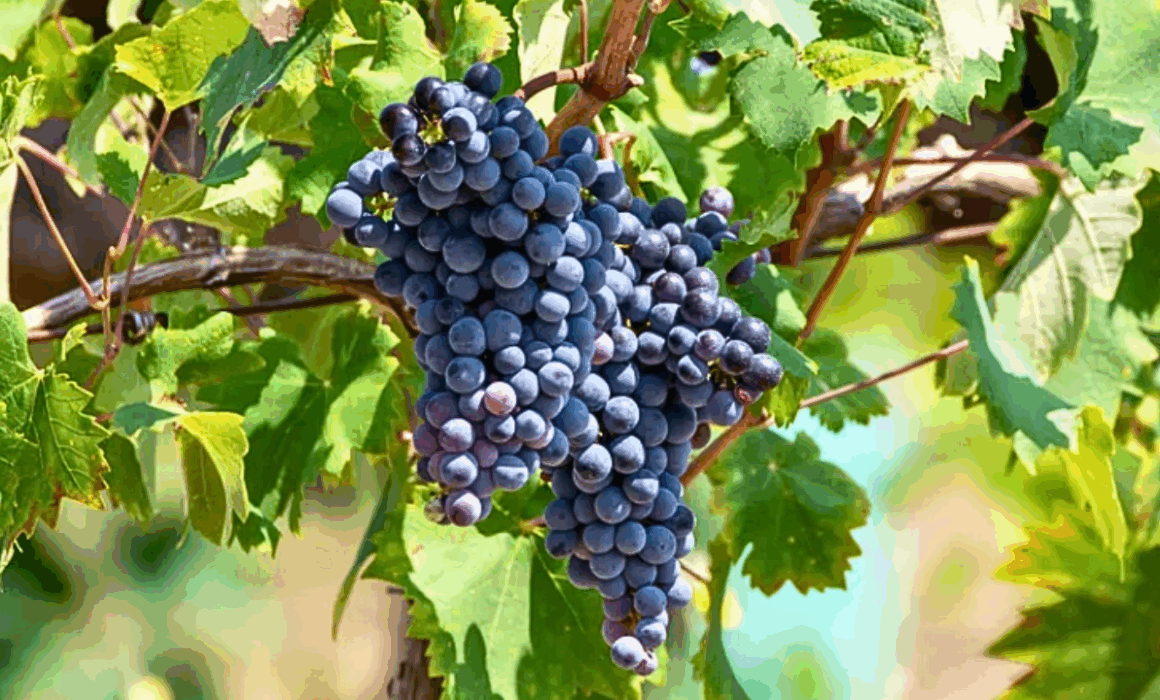The Many Ms of Mataro
By: Virginie Boone
Mataro is a late-ripening, full-bodied red variety that can be traced to Spain, as well as France, where it’s called Mourvedre and grown predominantly in the Southern Rhone and Provence. Mataro in Spain is also called Monastrell and one of its most prolifically planted grapes, with a lineage dating back to the 1380s.
The wines made from Mataro/Mourvedre are full-bodied and full-flavored, with dark color and a distinct savory earthiness. Berries are thick-skinned. It’s resistant to botrytis but not drought.
In California, it is thought to have arrived in the 1850s by way of Louis and Pierre Pellier, French brothers who came to the state to seek gold in 1849, settling in San Jose. The Pelliers brought nursery stock wine grape varieties back from France which came to be known as the Pellier Collection, as well as a French prune that soon became the Santa Clara Valley’s prime agricultural product.
The nursery cuttings spent six months at sea, sailing around Cape Horn, with each cutting placed into a sliced potato to protect it from drying out. The Pelliers’ ancestors later founded Mirassou Winery.
As a result of their efforts, there was more Mataro in the Santa Clara Valley in the 1870s than Zinfandel. The grape was further planted in Northern California between 1878 and 1886. Mataro appears in Sonoma County newspapers as early as 1885 when it was touted in the Cloverdale Reveille as an important grape for introducing Americans to wine.
“To teach the people to give up beer and whiskey and drink wine… we must get the best and most palatable wine we can,” it read. “In France and the south coast of Spain, where they make the best red wine, it will be found from the recognized authorities that the favorite grape is the Mataro, which combines good keeping and shipping qualities. It is wholesome, keeps in age, improving and brightening.”
Charles Sullivan remarks in his Companion to California Wine encyclopedia in 1998 that “Mataro was particularly well-liked by wineries in California for its solid structure and rough but tasty fruit.”
“It was almost universally used here as a blending grape in both clarets and burgundies. This popularity did not lead to heavy planting, the number of acres during Prohibition being only about 3,000. The history of the variety during the dry years is unusual. Although it was then heavily planted, not much was shipped out of state by rail because it was so popular among home winemakers in California.”
The grape inspired a fashion line in the 1930s and 1940s from a company called Calijeunne, which consulted with UC Davis’s viticulture department to dye and name its fabrics in honor of four of California’s most “beautifully-colored grapes,” Mataro being among the four (the others were Mission, Malaga and Bouschet).
At its highest point, in 1939, there were as many as 8,143 acres of Mataro in the state. But those numbers started to decline year over year and by 1987, only 352 acres were left, most of them in Contra Costa County.
In 1988 Sonoma County’s Cline Cellars started making a Mataro from these older acres, kicking off a resurgence via the burgeoning Rhone Renaissance instigated by The Rhone Rangers. New plantings ensued, though never anywhere near its peak.
Still, in 1996 Mataro was the most valuable grape variety in Sonoma County, bringing in an average of $1,500/ton; at the time there were only 17 acres in production.
Today, the 2024 Sonoma County Grape Report lists 80 bearing acres of Mataro/Mourvedre in the region. But of course that is a pittance compared with Cabernet Sauvignon’s 12,700 acres in the ground, or even Grenache’s 287.
Across California there’s not a lot more – 2024 California Grape Acreage figures show a total of 1,013 acres in the state’s entirety, most of it planted before 2016.
Amista Vineyards makes a sparkling Mataro from its Dry Creek Valley vineyards that tastes of raspberry and rosewater. Planted at Ridge’s Lytton West estate, Mataro has also consistently been a mainstay of the winery’s Syrah Grenache Mataro blend, making it onto the label starting with the 2014 vintage.
Ridge acquired Lytton Springs Vineyard in 1995, when it had a small block of Syrah, and not only planted more Syrah but added Grenache and Mataro to the mix. It has also made a single-vineyard Mataro from Sonoma Valley’s Pagani Ranch, where Mataro is interplanted between Zinfandel vines.
Photo By: UC Davis Foundation Plant Services


